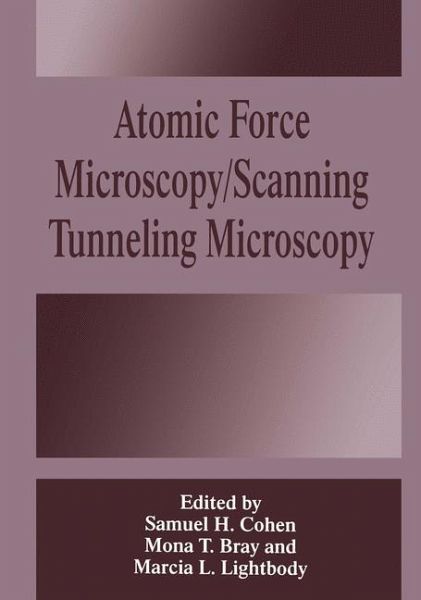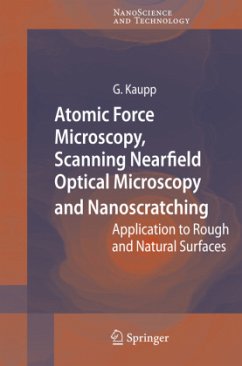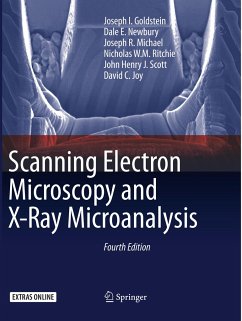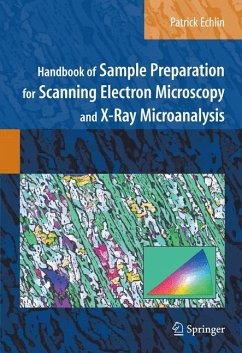
Atomic Force Microscopy/Scanning Tunneling Microscopy
Versandkostenfrei!
Versandfertig in 1-2 Wochen
115,99 €
inkl. MwSt.

PAYBACK Punkte
58 °P sammeln!
The first U. S. Army Natick Research, Development and Engineering Center Atomic Force/Scanning Tunneling Microscopy (AFM/STM) Symposium was held on lune 8-10, 1993 in Natick, Massachusetts. This book represents the compilation of the papers presented at the meeting. The purpose ofthis symposium was to provide a forum where scientists from a number of diverse fields could interact with one another and exchange ideas. The various topics inc1uded application of AFM/STM in material sciences, polymers, physics, biology and biotechnology, along with recent developments inc1uding new probe microscopi...
The first U. S. Army Natick Research, Development and Engineering Center Atomic Force/Scanning Tunneling Microscopy (AFM/STM) Symposium was held on lune 8-10, 1993 in Natick, Massachusetts. This book represents the compilation of the papers presented at the meeting. The purpose ofthis symposium was to provide a forum where scientists from a number of diverse fields could interact with one another and exchange ideas. The various topics inc1uded application of AFM/STM in material sciences, polymers, physics, biology and biotechnology, along with recent developments inc1uding new probe microscopies and frontiers in this exciting area. The meeting's format was designed to encourage communication between members of the general scientific community and those individuals who are at the cutting edge of AFM, STM and other probe microscopies. It immediately became clear that this conference enabled interdisciplinary interactions among researchers from academia, industry and government, andset the tone for future collaborations. Expert scientists from diverse scientific areas including physics, chemistry, biology, materials science and electronics were invited to participate in the symposium. The agenda of the meeting was divided into three major sessions. In the first session, Biological Nanostructure, topics ranged from AFM ofDNA to STM imagmg ofthe biomoleeule tubulin and bacterialluciferase to the AFM of starch polymer double helices to AFM imaging of food surfaces.














